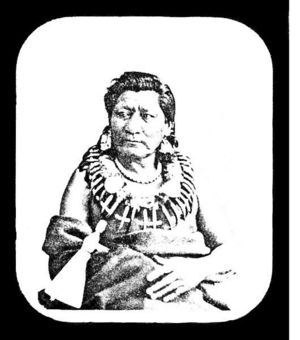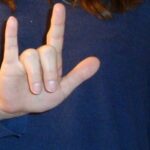Native Americans account for the highest known rates of Deaf individuals within their population. It is believed that as many as 15 in 650 Native Americans are severe to profoundly Deaf. This is more than two times the national average. Native Americans are more than three times as likely to be hospitalized for problems relating to the middle ear than other groups.
As many as 20-70 percent of the Native American population have problems relating to the middle ear, mostly due to Otis Media-an inflammation of the middle ear caused by the closing of the Eustachian tube due to swelling, which compounds the lack of the tube’s ability to drain the fluid from the middle ear cavity. The swelling constricts the ears ability to pick up and transmit vibrations which causes the person to experience some degree of hearing loss.
Early European explorers noticed that the Native Americans had a system of communication through sign language. Different tribes broke their individual language barriers by using a universal system of signs. This was predominant in the plains regions where the different tribes would gather to trade and hunt. During the gatherings, this universal system of signs was even used to tell stories and hold ceremonies. This language was known as PISL (Plains Indian Sign Language).
The Karesan Pueblo of Central New Mexico developed a system of signs called KPISL (Karesan Pueblo Indian Sign Language). This is one of the many Native American sign languages that were in use, and one of two systems used in the South West. The Navajos also had their own tribal system of sign language.
Sign language was also in wide use by the Hopis and the Apaches. The entire tribe knew how to use the sign language. Hearing people used it as a second language and Deaf people used it as a primary language. This solved the communication barrier between the Deaf and the hearing within the tribes.
The Iroquois, Cherokee and the Native Alaskans also had their own systems of sign language.
During the 16th Century, a Spanish Explorer, Cabeza de Vaca, reported using sign language with Native Americans in the Tampa Bay area. In 1540, Franciso de Coronado also expressed that he could communicate with the Tonkawa using signs, without the need of an interpreter.
Some historians allege that since the explorers often brought with them priests and monks, that the sign language developed by the monks was a derivative of what they witnessed among the Native Americans, and when they returned to Europe, they took the signs with them to use because of their vow of silence. There is no evidence to either confirm or refute this claim; it is just as likely that the monks developed their own system of sign the same way that Home Signers develop it. There is also evidence that the Deaf in many different European communities of the time had already developed a sign language that was being taught from Deaf to Deaf, that the monks picked up the language from them and expanded upon it as well.
Due to the rise in popularity of ASL, many Native Americans leaving the tribe and moving into American mainstream, and many other factors, the Native American sign languages are at risk of becoming extinct.
http://jan.ucc.nau.edu/~jar/NNL/NNL_11.pdf
http://library.rit.edu/guides/deaf-studies/deaf-culture-diversity-and-sociology/deaf-native-american-resources.html
http://www.essortment.com/hobbies/deafculturehis_slcm.htm






